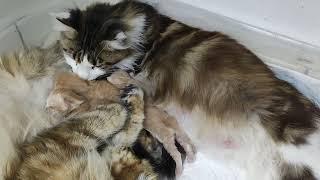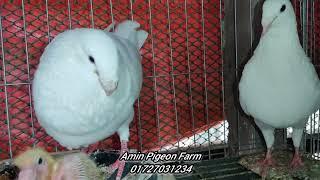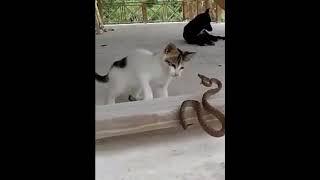Use coupon code "KITTENLIFE" to get 20% OFF The Best Cat Collars Available here :
https://www.bemixpets.com
( Use coupon code "KITTENLIFE" to get 20% OFF )
Maine Coon Facebook Page :
https://www.facebook.com/MaineCoon.org/
Maine Coon Facebook Group:
https://www.facebook.com/groups/mainecoonorg
===========================================================
Burmilla Cat VS. Burmese Cat.
What are the differences between these two cat breeds?
Burmilla is another example of the accidental creation of a new cat breed. The unplanned mating between a Burmese and a chinchilla Persian in England in 19 81 produced four black shaded female kittens with short, thick coats. The breeder realized how attractive such a breed could be and went on to develop what became known as the Burmilla. Burmilla is recognized by Britain’s Governing Council of the Cat Fancy and Europe’s Federation Internationale Feline. The breed entered the Cat Fanciers Association Miscellaneous Class in February 2011.
The ancestors of the Burmese are the Siamese and the copper cat of Burma. It’s thought that they were temple and palace cats bred and kept by priests. The matriarch of the modern Burmese was a small, dark-brown cat named Wong Mau. She belonged to Dr. Joseph Thompson, who either acquired her from a sailor or brought her back himself from his travels, depending on which story you believe.
Wong Mau was at first thought to be a Siamese with a chocolate-colored coat. Dr. Thompson bred Wong Mau to a seal-point Siamese named Tai Mau. His breeding program, in conjunction with breeders Virginia Cobb and Billie Gerst and geneticist Clyde Keeler, produced kittens with beige, brown, and pointed coats. The results, including the discovery of the Burmese gene, were so interesting that Thompson published an article on the subject in a 19 43 issue of the Journal of Heredity, the first such piece on feline genetics.
The Cat Fanciers Association began registering Burmese in 19 36 but suspended registrations in 19 47 because breeders were still using Siamese in their breeding programs. Registrations resumed in 19 53 after the practice was stopped. Today the Burmese is a popular breed among cat lovers.
Besides their sweet personalities, Burmillas stand out for their coats, which have a silver-white background color that is tipped or shaded with a contrasting color. In Burmillas with a tipped pattern, the color tips about 1/8 of the entire hair length and is evenly distributed, giving the coat a sparkling appearance. Burmillas with tipped coats generally look lighter than Burmillas with shaded coats.
In the shaded pattern, about 1/3 of the hair shaft is shaded, which is why the shaded cats look darker. Colors in both tipped and shaded patterns include black, brown, lilac, blue, chocolate, cream, red, and tortoiseshell. The silky coat can be shorthaired or longhaired. Longhairs may have ear tufts and a fully plumed tail.
In all other respects, they look much like the European Burmese with a gently rounded head that tapers to a short, blunt wedge; medium-size to large ears with slightly rounded tips that tilt forward a bit; large eyes that can be any shade of green, and a medium-sized body with slender legs, neat oval paws, and a tail that tapers to a rounded tip.
Burmese is often described as a brick wrapped in silk, a testament to his solid, muscular body. While the original Burmese was a dark solid-brown color known as sable, he now comes in other shades as well, including blue, champagne, and platinum. The cats have a compact body with a rounded head; large, expressive eyes in gold or yellow; and medium-sized ears that are rounded at the tips and tilt slightly forward.
The coat is short and satiny. The traditional sable is a rich, warm brown, slightly lighter on the underbody. A kitten’s coat darkens as it matures. Nose leather and paw pads are brown. A champagne-colored Burmese is a warm honey-beige shading to a pale gold-tan on the underside. Nose leather is a light warm brown and paw pads are a warm pinkish tan.
Blue Burmese have a medium-blue coat with a slightly lighter belly. Nose leather and paw pads are slate gray. Platinum Burmese are a pale silvery-gray with light fawn undertones and a slightly lighter color on the underbody. The nose leather and paw pads are a pretty lavender-pink. Some associations permit other colors, including tortoiseshell, lilac, and red.
===============
Copyright Disclaimer:
We respect the copyright interests of the individual owners in the video and don't claim to own the original clips.
However, under Section 107 of the Copyright Act 1976, allowance is made for "fair use" for purposes such as criticism, comment, news reporting, teaching, scholarship, and research. Fair use is a use permitted by copyright statute that might otherwise be infringing. The recent amendments to the Copyright Act of 1976 pertain to music. "Fair use" remains in force for film and video.
https://www.bemixpets.com
( Use coupon code "KITTENLIFE" to get 20% OFF )
Maine Coon Facebook Page :
https://www.facebook.com/MaineCoon.org/
Maine Coon Facebook Group:
https://www.facebook.com/groups/mainecoonorg
===========================================================
Burmilla Cat VS. Burmese Cat.
What are the differences between these two cat breeds?
Burmilla is another example of the accidental creation of a new cat breed. The unplanned mating between a Burmese and a chinchilla Persian in England in 19 81 produced four black shaded female kittens with short, thick coats. The breeder realized how attractive such a breed could be and went on to develop what became known as the Burmilla. Burmilla is recognized by Britain’s Governing Council of the Cat Fancy and Europe’s Federation Internationale Feline. The breed entered the Cat Fanciers Association Miscellaneous Class in February 2011.
The ancestors of the Burmese are the Siamese and the copper cat of Burma. It’s thought that they were temple and palace cats bred and kept by priests. The matriarch of the modern Burmese was a small, dark-brown cat named Wong Mau. She belonged to Dr. Joseph Thompson, who either acquired her from a sailor or brought her back himself from his travels, depending on which story you believe.
Wong Mau was at first thought to be a Siamese with a chocolate-colored coat. Dr. Thompson bred Wong Mau to a seal-point Siamese named Tai Mau. His breeding program, in conjunction with breeders Virginia Cobb and Billie Gerst and geneticist Clyde Keeler, produced kittens with beige, brown, and pointed coats. The results, including the discovery of the Burmese gene, were so interesting that Thompson published an article on the subject in a 19 43 issue of the Journal of Heredity, the first such piece on feline genetics.
The Cat Fanciers Association began registering Burmese in 19 36 but suspended registrations in 19 47 because breeders were still using Siamese in their breeding programs. Registrations resumed in 19 53 after the practice was stopped. Today the Burmese is a popular breed among cat lovers.
Besides their sweet personalities, Burmillas stand out for their coats, which have a silver-white background color that is tipped or shaded with a contrasting color. In Burmillas with a tipped pattern, the color tips about 1/8 of the entire hair length and is evenly distributed, giving the coat a sparkling appearance. Burmillas with tipped coats generally look lighter than Burmillas with shaded coats.
In the shaded pattern, about 1/3 of the hair shaft is shaded, which is why the shaded cats look darker. Colors in both tipped and shaded patterns include black, brown, lilac, blue, chocolate, cream, red, and tortoiseshell. The silky coat can be shorthaired or longhaired. Longhairs may have ear tufts and a fully plumed tail.
In all other respects, they look much like the European Burmese with a gently rounded head that tapers to a short, blunt wedge; medium-size to large ears with slightly rounded tips that tilt forward a bit; large eyes that can be any shade of green, and a medium-sized body with slender legs, neat oval paws, and a tail that tapers to a rounded tip.
Burmese is often described as a brick wrapped in silk, a testament to his solid, muscular body. While the original Burmese was a dark solid-brown color known as sable, he now comes in other shades as well, including blue, champagne, and platinum. The cats have a compact body with a rounded head; large, expressive eyes in gold or yellow; and medium-sized ears that are rounded at the tips and tilt slightly forward.
The coat is short and satiny. The traditional sable is a rich, warm brown, slightly lighter on the underbody. A kitten’s coat darkens as it matures. Nose leather and paw pads are brown. A champagne-colored Burmese is a warm honey-beige shading to a pale gold-tan on the underside. Nose leather is a light warm brown and paw pads are a warm pinkish tan.
Blue Burmese have a medium-blue coat with a slightly lighter belly. Nose leather and paw pads are slate gray. Platinum Burmese are a pale silvery-gray with light fawn undertones and a slightly lighter color on the underbody. The nose leather and paw pads are a pretty lavender-pink. Some associations permit other colors, including tortoiseshell, lilac, and red.
===============
Copyright Disclaimer:
We respect the copyright interests of the individual owners in the video and don't claim to own the original clips.
However, under Section 107 of the Copyright Act 1976, allowance is made for "fair use" for purposes such as criticism, comment, news reporting, teaching, scholarship, and research. Fair use is a use permitted by copyright statute that might otherwise be infringing. The recent amendments to the Copyright Act of 1976 pertain to music. "Fair use" remains in force for film and video.
- Catégories
- Chats de Race Maine Coon
- Mots-clés
- Burmilla Cats Soo Cute And Adorable, soo cute, burmilla
















Commentaires